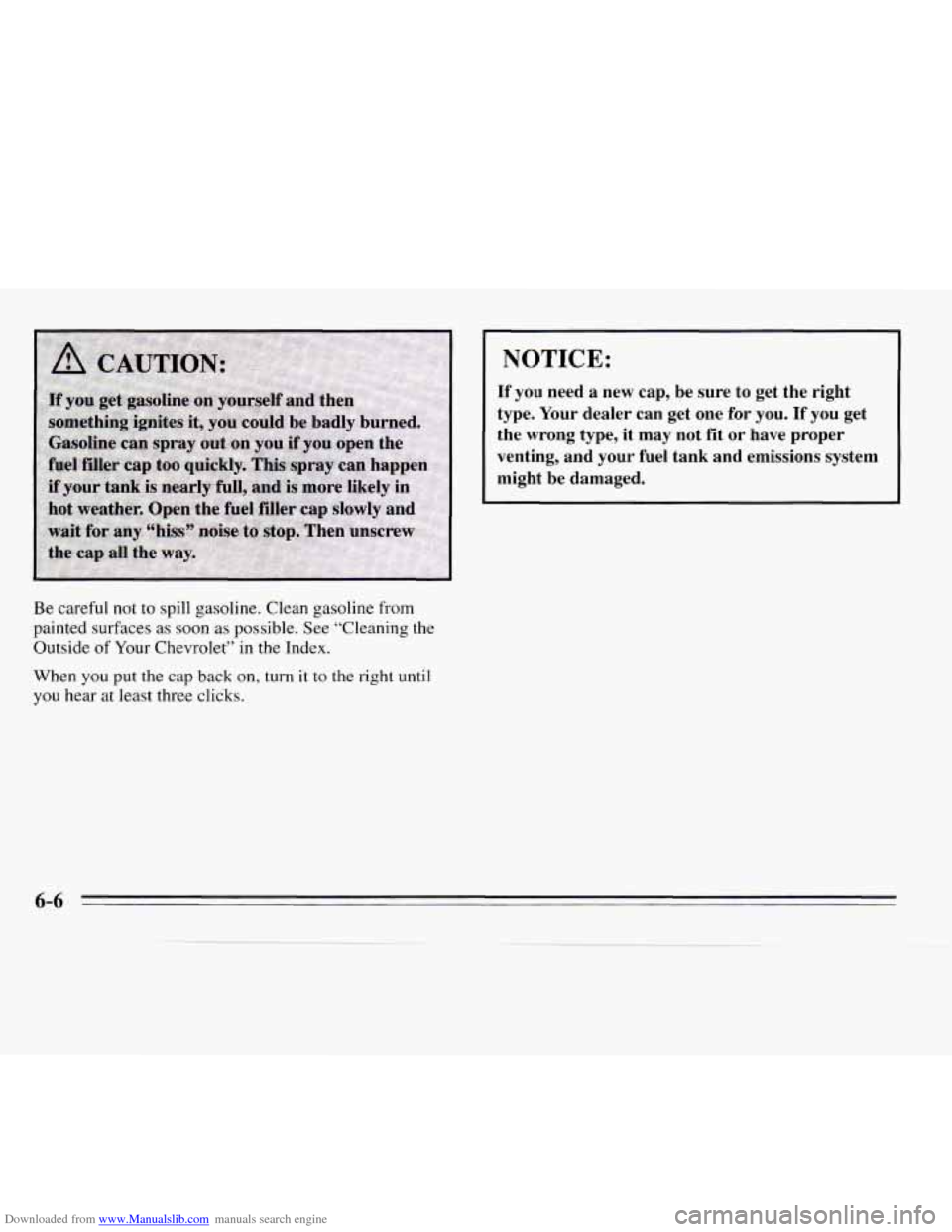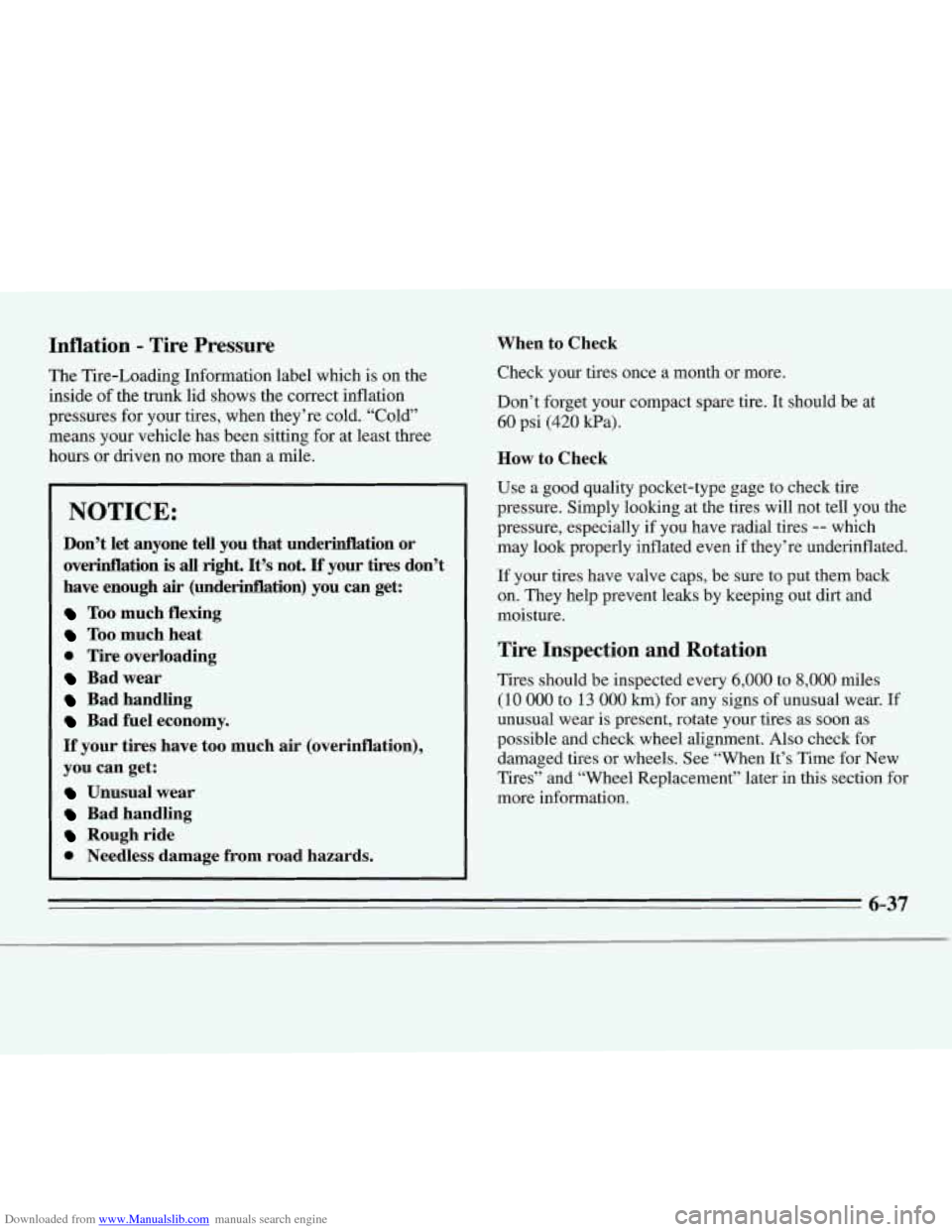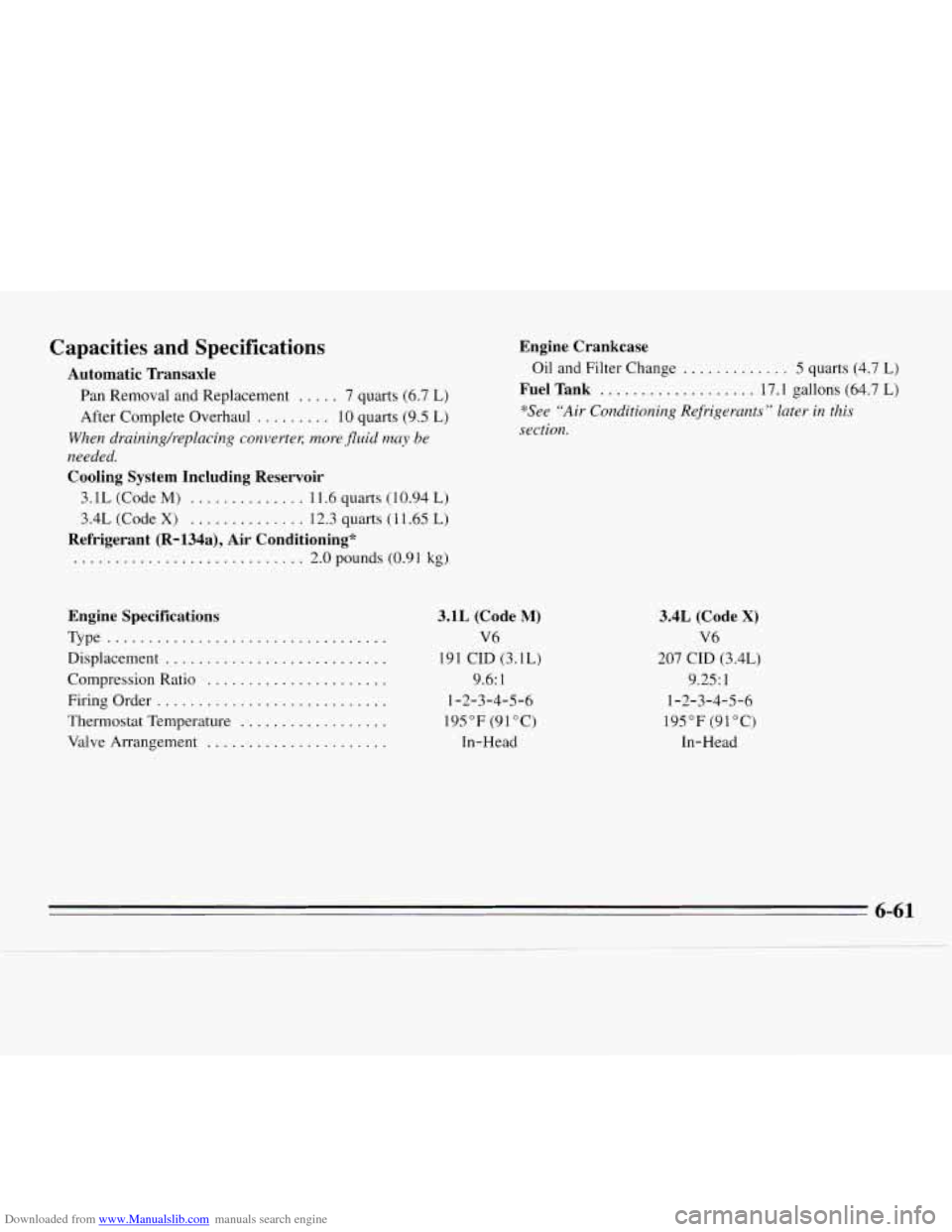fuel type CHEVROLET MONTE CARLO 1995 5.G Owners Manual
[x] Cancel search | Manufacturer: CHEVROLET, Model Year: 1995, Model line: MONTE CARLO, Model: CHEVROLET MONTE CARLO 1995 5.GPages: 324, PDF Size: 16.74 MB
Page 200 of 324

Downloaded from www.Manualslib.com manuals search engine Be careful not to spill gasoline. Clean gasoline from
painted surfaces as soon as possible. See “Cleaning the
Outside
of Your Chevrolet” in the Index.
When you put
the cap back on, turn it to the right until
you hear at least three clicks.
I NOTICE: I
If you need a new cap, be sure to get the right
type.
Your dealer can get one for you. If you get
the wrong type, it may not fit or have proper
venting, and your fuel tank and emissions system
might be damaged.
6-6
Page 231 of 324

Downloaded from www.Manualslib.com manuals search engine Inflation - Tire Pressure
The Tire-Loading Information label which is on the
inside of the
trunk lid shows the correct inflation
pressures for your tires, when they’re cold. “Cold”
means your vehicle has been sitting for at least three
hours
or driven no more than a mile.
NOTICE:
Don’t let anyone tell you that underinflation or
overinflation
is all right. It’s not. If your tires don’t
have enough
air (underinflation) you can get:
Too much flexing
Too much heat
0 Tire overloading
Bad wear
Bad handling
Bad fuel economy.
If your tires have too much
air (over
you can get:
Unusual wear
Bad handling
Rough ride inflation),
0 Needless
damage from road hazards. When
to Check
Check your tires once a month or more.
Don’t forget your compact spare tire. It should be at
60 psi (420 kPa).
How to Check
Use a good quality pocket-type gage to check tire
pressure. Simply looking at the tires will not tell you the
pressure, especially
if you have radial tires -- which
may look properly inflated even
if they’re underinflated.
If your tires have valve caps, be sure to put them back
on. They help prevent leaks by keeping out dirt and
moisture.
Tire Inspection and Rotation
Tires should be inspected every 6,000 to 8,000 miles
(10
000 to 13 000 km) for any signs of unusual wear. If
unusual wear is present, rotate your tires as soon as
possible and check wheel alignment. Also check for
damaged tires or wheels. See “When It’s Time for New
Tires” and “Wheel Replacement” later in this section for
more information.
6-37
Page 255 of 324

Downloaded from www.Manualslib.com manuals search engine Capacities and Specifications
Automatic Transaxle
Pan Removal and Replacement ..... 7 quarts (6.7 L)
After Complete Overhaul ......... 10 quarts (9.5 L)
When drainingheplacing converter; nzore.fZuid may be
needed.
Cooling System Including Reservoir
3.1L (Code M) .............. 11.6 quarts (10.94 L)
3.4L (Code
X) .............. 12.3 quarts (11.65 L)
............................ 2.0 pounds (0.9 1 kg)
Refrigerant (R-l34a), Air Conditioning* Engine Crankcase
Oil and Filter
Change ............. 5 quarts (4.7 L)
Fuel Tank ................... 17.1 gallons (64.7 L)
*See “Air Conditioning Refrigerants” later in this
section.
Engine Specifications
Type ..................................
Displacement ...........................
Compression Ratio .....................
Firing Order ............................
Valve Arrangement ......................
Thermostat Temperature ..................
3.1L (Code M)
V6
191 CID (3.1L)
9.6: 1
1-2-3-4-5-6
195°F (91°C)
In-Head
3.4L (Code X)
V6
207 CID (3.4L)
9.25: 1
1-2-3-4-5-6
195°F (91 “C)
In-Head
6-61